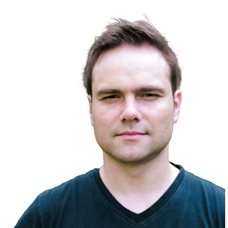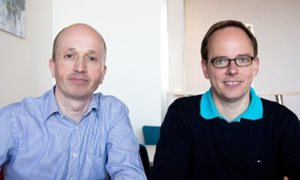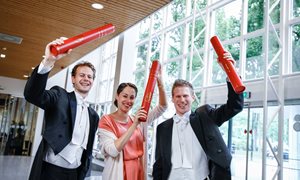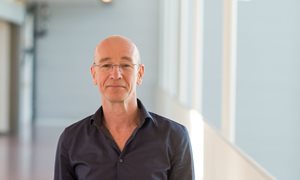10 August 2017
To address these issues, we developed the R-based open source web browser application Frapbot, which is compatible with all available Internet browsers and thereby independent of any operating system. Frapbot comes along with an intuitive user interface and provides the functionalities for automated analyses of datasets using a novel pattern recognition algorithm that recognizes relevant columns and identifies the presence or absence of prebleach values and the time point of photobleaching. This unsupervised strategy allows an instant overview over the collected data, endorsing a conclusion over the FRAP data quality free from observer bias. Alternatively, Frapbot can be used for supervised processing and analysis of FRAP data by manual control of individual steps in the algorithm. The results are provided as .zip file, which contains .csv formatted output tables. Frapbot users can also download the source code package and perform the analysis offline in any R programming environment.
Frapbot has been successfully published at Cytometry-A and the platform is accessible via www.frapbot.com.


Robin Kohze Samuel Schmidt
 Robin Kohze and Samuel Schmidt, Dept. of Biochemistry, theme Nanomedicine have released a new open source R-based web application for the analysis of Fluorescence Recovery After Photobleaching (FRAP) data.
Robin Kohze and Samuel Schmidt, Dept. of Biochemistry, theme Nanomedicine have released a new open source R-based web application for the analysis of Fluorescence Recovery After Photobleaching (FRAP) data.
To address these issues, we developed the R-based open source web browser application Frapbot, which is compatible with all available Internet browsers and thereby independent of any operating system. Frapbot comes along with an intuitive user interface and provides the functionalities for automated analyses of datasets using a novel pattern recognition algorithm that recognizes relevant columns and identifies the presence or absence of prebleach values and the time point of photobleaching. This unsupervised strategy allows an instant overview over the collected data, endorsing a conclusion over the FRAP data quality free from observer bias. Alternatively, Frapbot can be used for supervised processing and analysis of FRAP data by manual control of individual steps in the algorithm. The results are provided as .zip file, which contains .csv formatted output tables. Frapbot users can also download the source code package and perform the analysis offline in any R programming environment.
Frapbot has been successfully published at Cytometry-A and the platform is accessible via www.frapbot.com.
Robin Kohze Samuel Schmidt
Related news items

Prinses Beatrix Spierfonds grant to investigate patient stratification in myotonic dystrophy
24 January 2020 RIMLS researchers Rick Wansink and Roland Brock, both theme Nanomedicine, received a € 280,000 grant from the Prinses Beatrix Spierfonds. go to page
RIMLS PhD grants awarded to eight RIMLS (j)PI's
12 September 2019 Recently, RIMLS held an internal call for Radboudumc junior researcher (PhD) positions. Congratulations for all the awardees and all the best in conducting the research projects. go to page
NWO grant to develop new biomaterials for improved regeneration of bone defects
20 August 2019 Sander Leeuwenburgh, theme Reconstructive and regenerative medicine, and Roland Brock, theme Nanomedicine, were recently awarded with a grant of 581 k€ by NWO, domain Applied & Engineering Sciences, to develop new biomaterials for improved regeneration of bone defects. go to page
Understanding the inner architecture of a nanomedicine
29 April 2019 The group of Roland Brock, theme Nanomedicie, and colleagues, used superresolution microscopy to quantitatively image the structure and composition of peptide – messenger RNA nanoparticles and related this to biological activity. They have published their findings in Nano Letters. go to page

